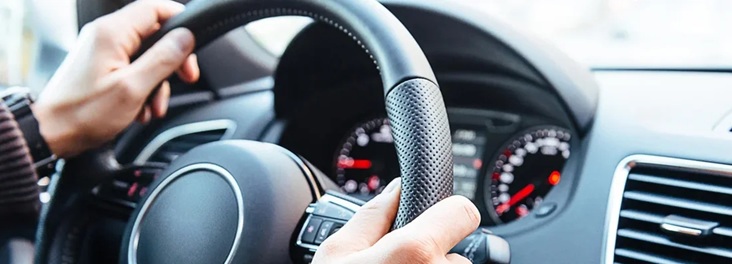Every time you get behind the wheel, you’re responsible not only for your safety but also for the well-being of passengers, pedestrians, and other drivers. Defensive driving is an essential skill that helps reduce the risk of accidents by anticipating potential hazards and reacting appropriately. Whether you’re a new driver or a seasoned one, mastering defensive driving techniques can make the roads safer for everyone.
What Is Defensive Driving?
Defensive driving is a proactive approach to operating a vehicle that emphasizes awareness, anticipation, and safe decision-making. Instead of merely following traffic laws, defensive drivers go a step further by predicting possible dangers and preparing to react before an accident occurs. The goal is to minimize risks caused by bad weather, reckless drivers, road hazards, and unexpected situations.
Key Defensive Driving Techniques
1. Stay Alert and Focused
One of the most important aspects of defensive driving is maintaining focus. Avoid distractions such as texting, eating, or adjusting the radio while driving. Keep your eyes on the road, scan your surroundings, and be aware of what other drivers are doing. This heightened awareness allows you to react swiftly to potential dangers.
2. Maintain a Safe Following Distance
Tailgating is one of the leading causes of rear-end collisions. To prevent accidents, always maintain a safe following distance between your vehicle and the one in front of you. A general rule of thumb is the three-second rule—pick a stationary object on the side of the road and count three seconds from when the car ahead of you passes it. If you reach it before three seconds, you’re following too closely. In poor weather conditions, increase this distance to at least five seconds.
3. Obey Speed Limits
Speeding reduces your ability to react to unexpected obstacles. Speed limits are set based on road conditions, traffic patterns, and safety considerations. Driving at a safe speed not only helps you stay in control but also gives you enough time to brake if necessary.
4. Expect the Unexpected
Defensive drivers never assume that other drivers will act responsibly. Always be prepared for sudden lane changes, abrupt stops, or distracted drivers who may not see you. By staying vigilant and anticipating these possibilities, you can avoid dangerous situations before they escalate.
5. Use Your Mirrors and Check Blind Spots
Your rearview and side mirrors are essential for defensive driving, but they don’t eliminate blind spots. Before changing lanes, always do a quick shoulder check to ensure there are no vehicles or cyclists in your blind spot. This simple habit can prevent serious accidents.
6. Adapt to Weather and Road Conditions
Bad weather increases the risk of accidents. Rain, snow, fog, and ice can make roads slippery and reduce visibility. Defensive drivers adjust their speed, increase following distances, and use headlights when necessary. If conditions become too dangerous, it’s best to pull over and wait until it’s safe to continue driving.
7. Use Turn Signals and Communicate Clearly
Signaling your intentions early helps other drivers predict your actions. Whether changing lanes, turning, or merging, always use your turn signals to avoid confusion. Clear communication prevents misunderstandings that could lead to collisions.
8. Avoid Road Rage and Aggressive Driving
Aggressive driving, such as tailgating, cutting off other vehicles, or excessive honking, increases the risk of accidents and conflicts. Stay calm and patient, even if another driver is acting irresponsibly. If you encounter an aggressive driver, don’t engage—slow down, change lanes, or exit the road if necessary.
9. Be Cautious at Intersections
Intersections are common locations for accidents. Always look both ways before proceeding, even if you have the right of way. Watch for red-light runners and pedestrians crossing unexpectedly. Defensive drivers approach intersections carefully to avoid potential collisions.
10. Avoid Driving Under the Influence
Alcohol and drugs can significantly impair your judgment, reaction time, and coordination, increasing the risk of accidents. Even certain prescription medications may affect your ability to drive safely. If you’re unfit to drive, choose a safer alternative—opt for a designated driver, public transportation, or a ride-sharing service.
However, if you or a loved one has been involved in an accident due to an impaired driver, consulting a Salt Lake City car accident lawyer can help you understand your legal options and seek the compensation you deserve.
Why Defensive Driving Matters
Practicing defensive driving can significantly reduce your risk of being involved in an accident. The benefits include:
- Fewer accidents and injuries – Defensive driving helps prevent collisions and protects lives.
- Lower insurance premiums – Many insurance companies offer discounts to drivers who complete defensive driving courses.
- Reduced vehicle repair costs – Avoiding accidents means fewer repairs and lower maintenance expenses.
- Less stress on the road – Being prepared and aware helps you stay calm and confident while driving.
Final Thoughts
Defensive driving isn’t just a technique—it’s a mindset. By staying alert, anticipating hazards, and making safe driving choices, you can protect yourself and others on the road. Every driver has a role in creating a safer driving environment, and practicing defensive driving is one of the best ways to prevent accidents.
Drive smart, stay safe, and always be prepared for the unexpected.
